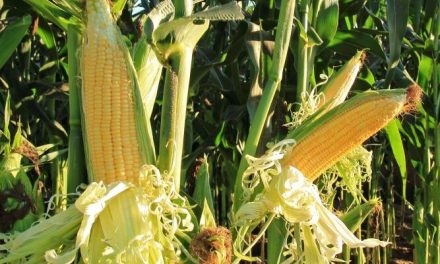
https://marketresearch.biz/report/neem-extract-market/
Organic farming is a type of cultural crop production that combines cultural and biological techniques to improve soil fertility and attain ecological balance in agricultural system.
Crop rotation, green manure, organic waste, and biological pest control are some of the ecologically balanced agricultural principles used in the system. Pesticides and fertilisers are used in organic farming if they are natural and free of petrochemicals or active ingredients. Organic farming is the ideal way for pest and disease management in agriculture from an environmental viewpoint.
It is non-toxic, requires less inputs, and dramatically improves ecological balance while encouraging biological variety and protecting the environment. Pests and diseases continue to be a challenge to agriculture, resulting in significant crop losses each year. The use of organic pesticides in the farming system is one of the most fundamental techniques to reducing crop loss. This simple booklet provides a step-by-step approach on making organic pesticides with neem-seed oil extract, which is widely available in most tropical climates.
________________________________________________________________________
Read Also : ‘Code red’: UN report sounds alarm over irreversible climate impact, warns global warming threshold…
________________________________________________________________________
Proven benefits neem as an organic insecticide

https://explore.globalhealing.com/neem-oil/
Apart from the various applications and benefits linked with neem tree products, such as its antifungal and pesticide capabilities, neem organic pesticide offers the following benefits:
- They are abundantly accessible in most tropical locations.
- Preparation is less costly.
- It’s simple to make and use.
- Less harmful to non-target organisms (more environment friendly).
- No advanced training is required for handling and application.
- Simple application equipment and procedures were required.
Steps to Step guide for making Organic Neem Pesticides
The Neem tree (Azadirachta indica) is a tropical evergreen tree that originated in India and is now widespread across the tropics, especially in Africa’s arid areas. The tree has a rapid growth rate and is drought resistant. The neem tree is commonly used as a windbreak and for shade in communities and cities throughout West Africa’s Sahel area. Because of its medicinal ability, the neem tree is renowned in India as “the village pharmacy” and has been utilised in medicine to treat a variety of maladies by local populations. Two primary processes are involved in the production of organic insecticides from the neem tree. To extract neem oil, the initial process is collecting ripe seeds, drying, roasting, crushing, and pressing them. The oil is then made into a pesticide in the second phase by diluting it with water to the necessary volume.
________________________________________________________________________
Read Also : Is it possible to prevent Global Warming?
________________________________________________________________________
1. Oil extraction from neem seeds
The oil from neem seeds is extracted using a variety of ways. Depending on the resources available, these strategies might range from simple to complicated.
A seed pressing machine, which may be converted from a regular oil extracting machine or readily produced by local professionals using simple requirements, is one easy mechanical technique. The following are the steps that included arenas:
Seed collection
Neem seeds may be easily harvested from plants once they have grown.
Seed cleaning, drying, and sorting:
Ripe seeds are gathered and cleaned to eliminate any skin. After that, the seeds are spread out in the sun to dry. Their moisture level is reduced while drying, making decortication more simpler. Hand picking is used to remove foreign objects such as stones and dirt.
Seed shelling and winnowing:
After the seeds have completely dried, they are shelled by pounding to get clean kernels. After that, the crushed mass is winned to separate the seeds from the shells.
Crushing the kernels:
The cleaned kernels are next pounded into a fine mesh using a mortar and pestle. The crushed material is then winnowed to make the following stage easier.
Sieving:
To achieve a fine greenish brown powder, the pounded pulp is sieved through a very fine sieve.
Streaming:
The neem powder is then streamed for 15–20 minutes by placing it over hot water. This activity allows you to make a dough from which you can easily extract oil.
The heated material (dough) is contained in a fine cloth or empty bag capable of permitting liquid flow and then placed in the barrel of the oil extraction machine once it has been formed into dough. A metal cover is put on the encased dough to be squeezed into the barrel.
The dough is pressed by twisting the metal wrench-bar clockwise, and when enough pressure is applied to the dough, oil begins to flow out the mouth of the barrel, which is collected below.
If the procedure is followed correctly, 1 kilogramme of neem seeds can provide 100-150 mL of neem oil.
After diluting the neem oil, it may be sprayed on crops with a Knapsack sprayer or by simply dipping a broom in the liquid and dusting it on crop leaves.=
Organic pesticide neem properties

https://www.medicalnewstoday.com/articles/325048
The neem tree produces a number of insect repellent chemicals (azadirachthin, meliantriol, and salannin) that prevent insect pests from maturing or feeding without harming birds or animals. These compounds have been found to be effective in pest and disease management in various places of the world where they have been employed as insecticides.
________________________________________________________________________
Read Also : Global Warming Kills 14 Per Cent Of World’s Corals In A Decade: Survey
________________________________________________________________________
Phyllis Kasper (1993) reported on the usage of neem tree products for pest control among the agricultural population in The Gambia.
Applications Of Neem
- Antiseptic, fungicidal, and nematicidal characteristics of neem products. Neem oil is mostly used as a fungicide as a prophylactic measure when the disease is just beginning to show symptoms.
- Neem leaves may be utilised as an organic manure and soil conditioner. The neem cake, which may be used as organic manure, contains around 4% nitrogen, 0.5 percent phosphorus, 0.5 percent potassium, and lower amounts of micronutrients. 3. The cake is also used to keep eggplant and tomato leaves free of borers and leaf spot infections. 4. According to research, neither people nor animals are harmed by neem products. Most beneficial insects will be spared, while pests will not build resistance over time.







